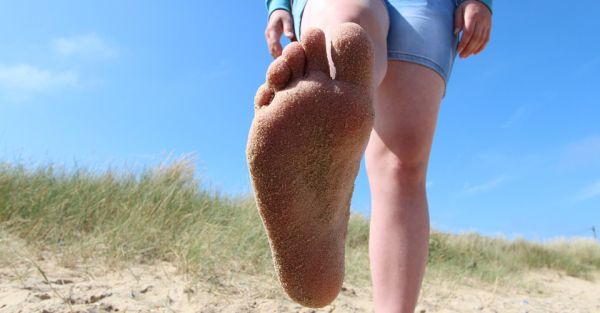7 things walkers should know about ticks
Be tick-aware to reduce your risk of being bitten

There are lots of brilliant reasons to enjoy walking. But one downside can be the risk of getting a tick bite which, on occasion, may become infected. And in a worst-case scenario tick bites on humans can cause Lyme disease which can develop into a serious illness if not spotted early. So here is our list of 7 things walkers should be aware of on the topic of ticks.
1. Where do ticks live?
Ticks are present across England, Scotland and Wales, and are usually found in woodlands and forests, moorland and grassland or in areas of bracken. However, they can also be present in urban green spaces and even gardens. They feed off birds and mammals, such as deer, squirrels or sheep so if there are these animals around, there are likely to be ticks.
2. Are tick bites common?
It’s hard to know how common human tick bites are across the UK, but it does seem that more people are being bitten by ticks. That could be because there are more ticks around. Or it might just be that people are becoming more aware of ticks and therefore reporting them.
3. When are tick bites most likely to happen?
Ticks are usually around from March to October. But with our climate getting warmer, there is a greater chance of picking up a tick at any time of the year. However, in winter you’re more likely to be wrapped up in boots and thicker clothing which makes it harder for a tick to latch on to you.
4. What does a tick look like and how do they bite?
Ticks come in different sizes depending on their age, so the smallest are like a poppy seed and difficult to see. Older ticks are like tiny spiders and easier to spot. They get bigger as they fill with blood.
Ticks will attach themselves to your skin or your clothing and move around for a while until they find a place to ‘dig in’. The tick may stay there for a day or two before falling off. Tick bites are painless so if you don’t see a tick you may not even be aware you have been bitten.
5. How do I remove a tick?
If you do find a tick carefully remove it as soon as possible. Ideally use a special tick-removing tool or if you don’t have one, use fine tipped tweezers. Don’t just try and pull it off with your fingers.
Get a firm hold of the tick, at the point where its mouth is biting your skin and gently pull it off you. Take care not to squeeze the tick’s body as you do so. Once removed, wash the skin and use antiseptic cream on the bite area. Keep an eye on that part of your body for any signs of infection.
6. What precautions should I take?
-
Try to avoid walking through long grass, heather and bracken.
-
Wear long trousers (not shorts) and boots (not sandals) and tuck your trousers into your socks
-
Use insect repellent and carry a lint roller to run over your clothing occasionally
-
Carry a tick remover with you
-
Check for ticks during and after your walk. Change your clothing as soon as you can after your walk. As a minimum, give your trousers and boots a good brush down
-
For the next few days check your body when you’re in the shower or getting dressed.
7. How would I know if I have Lyme disease?
You would likely notice an infection within a month of the bite. The most obvious symptom is an expanding rash that may look like a bull’s eye. In this case, contact your doctor’s surgery. A course of antibiotics should clear the infection.
But not everybody gets a rash. Other symptoms can be flu-like (such as fatigue, headache, muscle and joint pain, neck stiffness, fever and sweats). If you suspect you may have a tick bite, again contact your doctor’s surgery and explain your concerns.
More information on Lyme Disease
The NHS page on Lyme disease includes pictures of what to look out for and the charities Lyme Disease UK and Lyme Resource Centre offer lots of further support and advice.

5 simple tips to avoid blisters when walking
Look after your feet and void the annoyance and pain of blisters when walking by following our 5 simple tips.

7 top tips to stay safe in a thunderstorm
Thunder and lightning can happen at any time of the year in Great Britain. So it’s good to know what to do if you encounter a thunderstorm whilst out walking.

Summer walking – 5 ways to stay safe in the heat
We love walking in the summer weather. But it’s important to protect ourselves from the sun. Read our 5 top tips for staying safe in the summer heat.